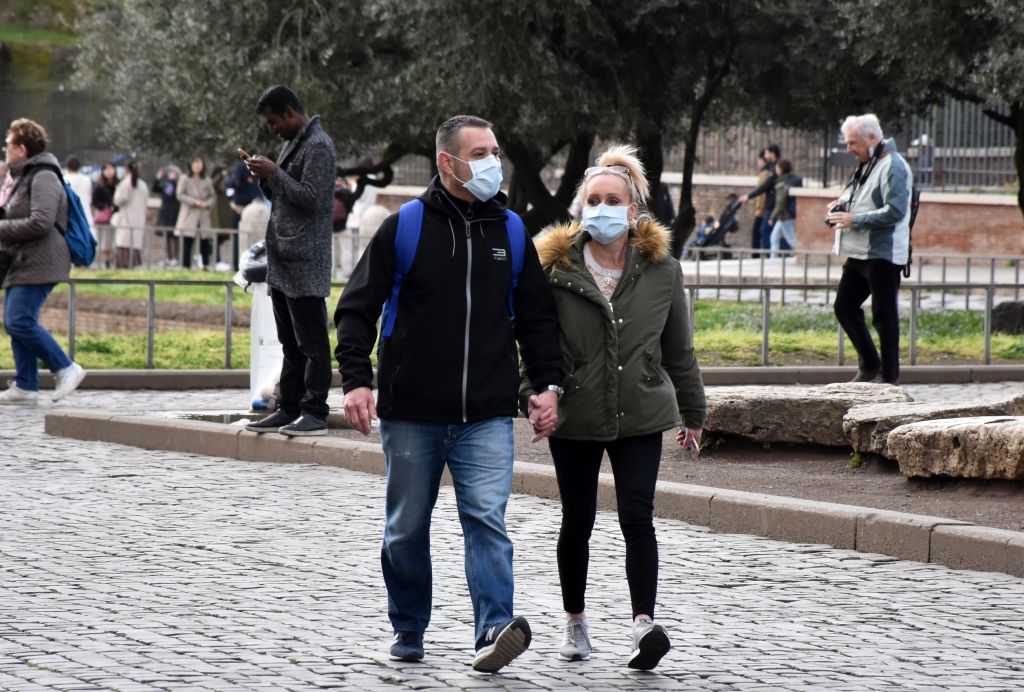
Questions about coronavirus—how it behaves, who it strikes, and how bad it can get—are spreading almost as fast as the virus itself. Among the most important questions to answer is how long it takes people who are infected by SARS-CoV-2, the virus that causes COVID-19, to show symptoms. Understanding that timeline, known as an incubation period, is crucial to developing effective disease containment and prevention measures.
A new study, published Monday in the Annals of Internal Medicine, offers a new estimate that is largely in keeping with other early studies of the outbreak. The coronavirus’ median incubation period, the new paper says, appears to be about five days, with the vast majority of people developing symptoms within 12 days.
Incubation numbers will “inevitably be refined as we get more information,” says study co-author Justin Lessler, an associate professor of infectious disease epidemiology at the Johns Hopkins Bloomberg School of Public Health, but having early insights is “important for thinking about controls such as quarantine and active monitoring.”
The U.S. Centers for Disease Control and Prevention has been isolating individuals suspected or confirmed to have COVID-19 for 14 days, working off the assumption that the disease’s average incubation period is roughly a week long—and thus, that almost everyone infected by the virus will show symptoms within a 14-day period.
Sign up for our daily coronavirus newsletter by clicking on this link.
While there have been reports of incubation periods longer than 14 days, the new study estimates that about 1% of every 10,000 patients would develop symptoms after being released from a two-week monitoring period. At this point in the outbreak, when there’s no longer a possibility of entirely stopping the spread of COVID-19 within the U.S., Lessler says public-health officials may have to live with that risk.
“Now that the virus is out there in more places in the U.S., maybe just some risk mitigation and slowing things down is a better strategy” than making quarantine practices even more aggressive, Lessler says. “It’s not like quarantine doesn’t have costs, particularly if it’s a health care worker.”
Lessler and his colleagues based their estimates on 181 confirmed COVID-19 cases reported by media outlets and public-health groups between Jan. 4 and Feb. 24., 2020. Most cases were among people who had traveled to Wuhan, China, where the outbreak originated, and determining exactly when each person became ill required some educated guesswork. Whenever possible, researchers relied on a specific sequence of events—a particular interaction or activity that may have led to infection—to calculate the delay between exposure and symptom onset.
Lessler emphasizes that it’s early days for crunching data about the outbreak—especially in the U.S., where large-scale testing is only just beginning. But as more data about incubation period, mortality rates and other facets of the outbreak accumulate, doctors will have an increasingly solid idea of what they’re up against.
Send any tips, leads, and stories to virus@time.com.
More Must-Reads From TIME
- The 100 Most Influential People of 2024
- Coco Gauff Is Playing for Herself Now
- Scenes From Pro-Palestinian Encampments Across U.S. Universities
- 6 Compliments That Land Every Time
- If You're Dating Right Now , You're Brave: Column
- The AI That Could Heal a Divided Internet
- Fallout Is a Brilliant Model for the Future of Video Game Adaptations
- Want Weekly Recs on What to Watch, Read, and More? Sign Up for Worth Your Time
Write to Jamie Ducharme at jamie.ducharme@time.com